Scientific name Parabuthus Order Scorpion | Higher classification Buthidae Rank Genus | |
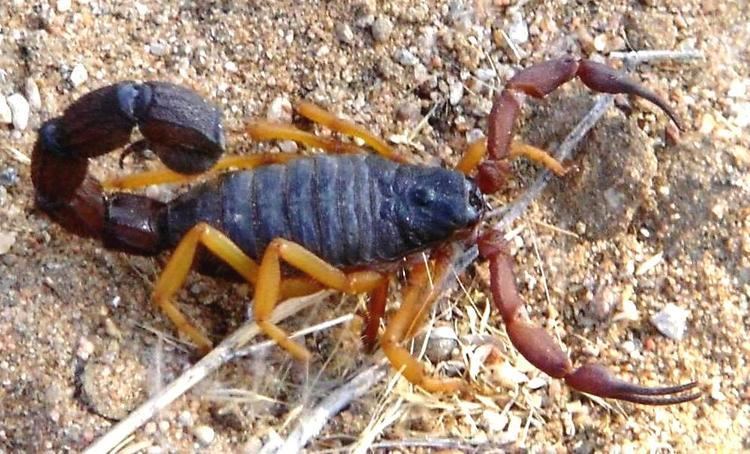 | ||
Similar Scorpion, Parabuthus transvaalicus, Fattail scorpion, Parabuthus villosus, Buthidae | ||
Female parabuthus villosus orange morph first time lapse feeding
Parabuthus is a genus of large and highly venomous Afrotropical scorpions, that show a preference for areas of low rainfall. Their stings are medically important and human fatalities have been recorded.
Contents
- Female parabuthus villosus orange morph first time lapse feeding
- Parabuthus transvaalicus i5 feeding
- Characteristics
- Diversity
- Selected species
- Phylogenetics
- References
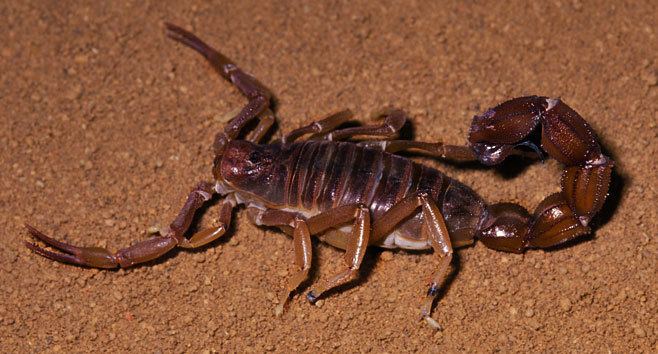
Parabuthus transvaalicus i5 feeding
Characteristics
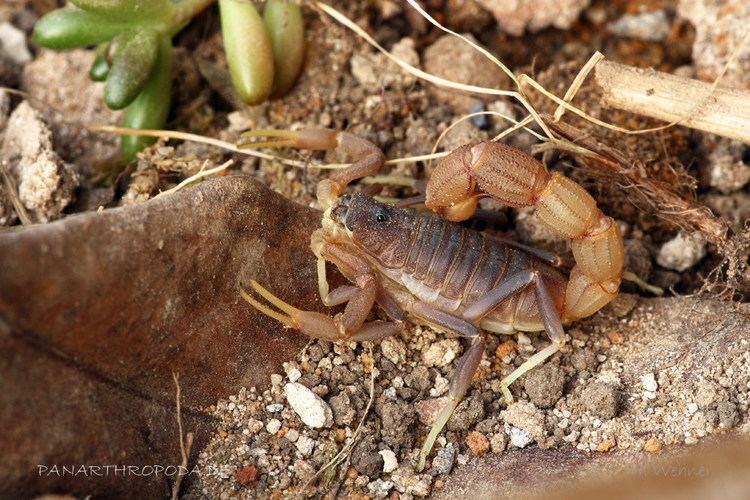
They have thick and strong tails, with typically a rough surface to the first (proximal) and sometimes second segment, that is used to produce a warning sound when rubbed against the sting (save P. distridor). Their thick tails are also employed in excavating their shallow burrows, as several are adapted to sandy environments. Some flatter-bodied species however take refuge in rock crevasses.
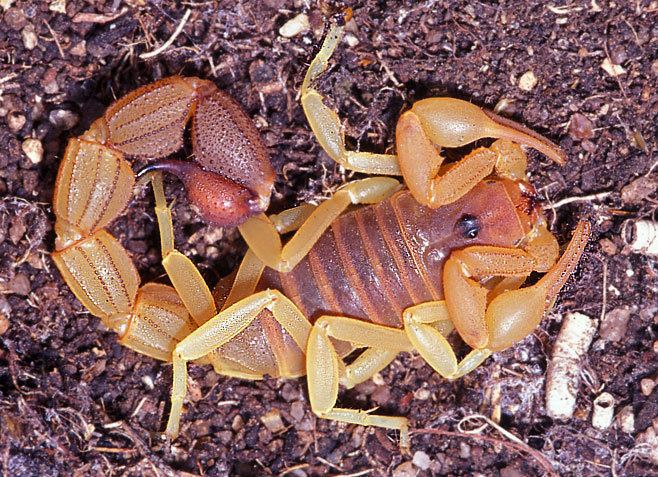
Due to their stings' quick acting venom they rely to lesser extent on their slender pinchers (chelae) to hold onto prey. It is suspected that three species, P. schlechteri, P. transvaalicus and P. villosus can spray venom from their tails. These three are also the largest buthids in the world, reaching lengths of up to 140 mm and masses of up to 14 g.
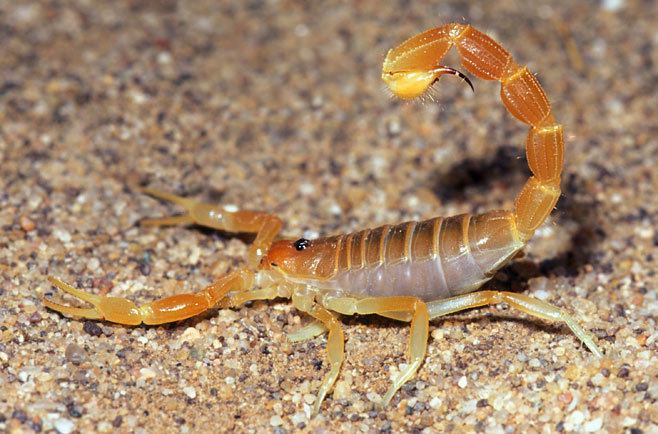
Other consistent features include a dorsal head covering (carapace) that lacks granular ridges (carinae), while the tail's upper coverings (tergites) have only one inconspicuous middle (median) ridge. The pectine teeth nearest the body in females are enlarged and dilated (P. granulatus and P. kalaharicus excepting), and the lower tarsi (3rd distal segment) of the front four legs are equipped with bristle combs. The ventrosubmedian ridges in the 4th tail segment disappear away from the body, and the ventrolateral ridges of 5th segment include distinctly spined or lobed processes near their distal ends.
Diversity
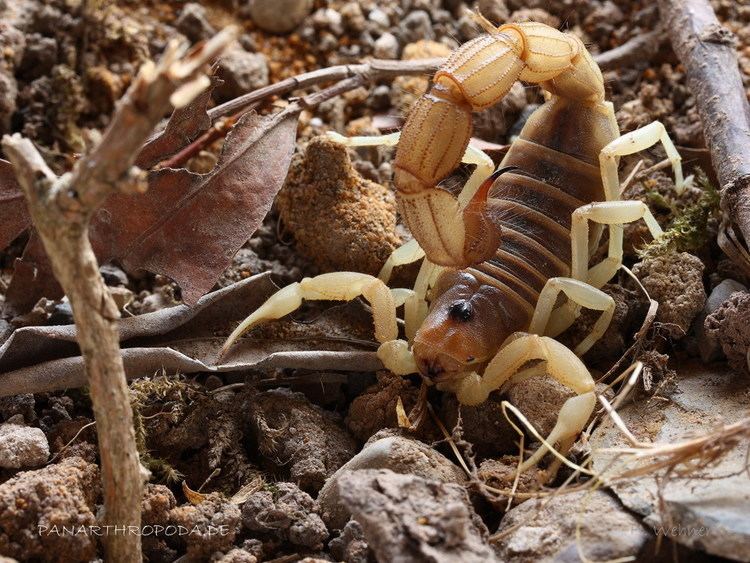
The majority of the species, some 20 of the total of 28, are endemic to southern Africa. They however range through eastern Africa to the Arabian Peninsula.
Selected species
Phylogenetics
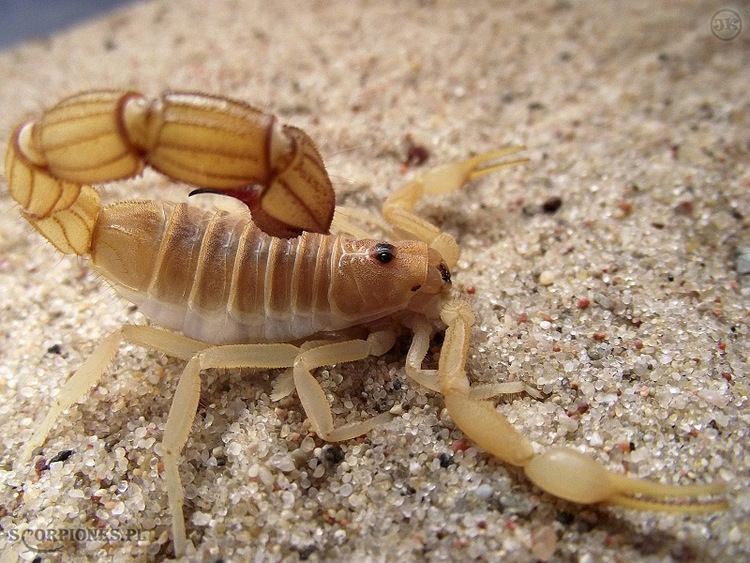
Its nearest relations are the Afrotropical buthid genera Grosphus and Uroplectes, which lack the distinct stridulatory surfaces. The following cladogram illustrates relationships among 20 Parabuthus and these outlying genera, according to an analysis done by Lorenzo Prendini et al. 2003. Some recently described species (P. cimrmani, P. eritreaensis, P. truculentus and P. zavattarii) were not considered in the investigation, so that their positions within this system remain unresolved.
